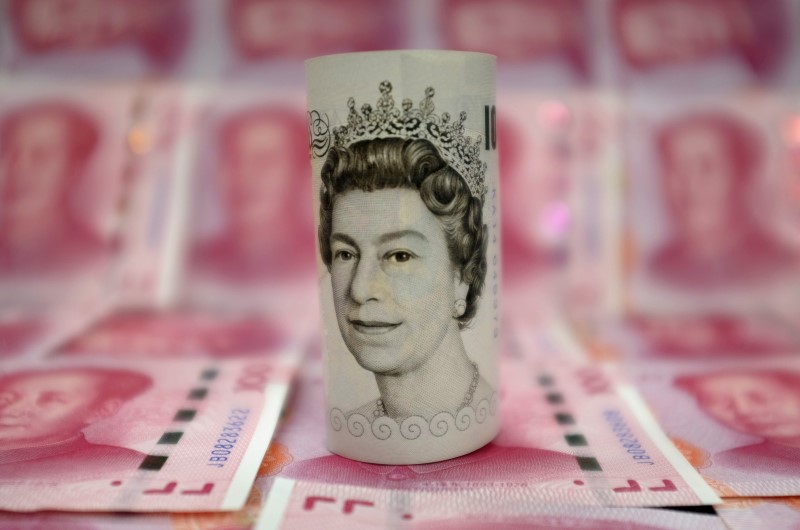UBS Paints Bullish Picture for British Pound, Australian Dollar, and Swiss Franc Amid Shifting Global Monetary Landscape
Zurich – UBS, a prominent global financial services firm, has released its currency outlook for the G10 and select emerging market currencies, projecting a positive trajectory for the British pound (GBP), Australian dollar (AUD), and Swiss franc (CHF) while maintaining a neutral stance on the Japanese yen (JPY). The bank’s forecasts hinge on anticipated interest rate movements, evolving monetary policies, and geopolitical factors, painting a dynamic picture of the global currency landscape in the years to come. For the GBP and AUD, UBS cites high interest rates coupled with the expectation of a gradual easing of monetary policy in the UK and Australia as the primary drivers of their bullish outlook.
The British pound, which has experienced volatility in recent years due to Brexit and global economic uncertainties, is expected to benefit from the Bank of England’s relatively hawkish stance on interest rates. Although inflation remains a concern, UBS anticipates that as inflationary pressures subside, the Bank of England will begin a gradual easing cycle, providing support for the currency. Similarly, the Australian dollar is projected to strengthen on the back of robust commodity prices and a resilient Australian economy. UBS believes that the Reserve Bank of Australia is nearing the end of its tightening cycle, which should create a favorable environment for the AUD. The bank forecasts the GBP/USD exchange rate to reach 1.35 and the AUD/USD to reach 0.68.
The Swiss franc, traditionally seen as a safe-haven currency, also receives a positive outlook from UBS. The bank argues that the Swiss National Bank has limited room to further reduce interest rates, which will maintain the attractiveness of the CHF relative to other G10 currencies. UBS predicts that as interest rate differentials with other major currencies narrow by 2025, inflows into the CHF will increase, potentially driving the EUR/CHF exchange rate down to 0.84. This reinforces the franc’s reputation as a stable and attractive investment in a potentially volatile global economic environment.
The Japanese yen, however, presents a more nuanced picture. UBS maintains a neutral stance on the JPY, acknowledging the potential for short-term fluctuations. While the bank sees the possibility of a near-term rise in the USD/JPY exchange rate to 155, particularly if US bond yields increase, it forecasts a medium-term decline to 145 by the end of 2025. This prediction is based on several factors, including the current USD/JPY level exceeding what yield differentials suggest, an anticipated contraction in the US-Japan yield differential, and the potential influence of political considerations.
Specifically, UBS highlights the historical precedent of US political pressure regarding the yen’s value. Past criticism of a weak yen by US officials, combined with a lack of desire among Japanese policymakers for further depreciation, could create an environment conducive to a mutually beneficial stronger yen. This scenario would involve coordinated efforts between the US and Japan to stabilize the exchange rate, ultimately leading to a more balanced and sustainable level. The complex interplay of economic and political forces underscores the challenges in predicting the yen’s trajectory.
Shifting its focus to emerging markets, UBS expresses a less optimistic view on the Chinese yuan (CNY). The bank anticipates a rise in the USD/CNY exchange rate to 7.50 by the end of 2025, primarily driven by potential escalations in US-China trade tensions. The expected appointment of Robert Lighthizer, known for his hawkish stance on trade with China, as the US Trade Representative further fuels this concern. While the People’s Bank of China has made efforts to stabilize the yuan by managing its daily fixing rate, UBS warns of significant risks for further depreciation should trade tensions intensify.
The ongoing trade dispute between the US and China represents a significant source of uncertainty for the global economy. UBS’s projection reflects the potential for further tariffs and trade restrictions, which could weigh heavily on the Chinese economy and, consequently, the yuan. Furthermore, any significant escalation in the trade war could have ripple effects throughout global supply chains and financial markets, adding to the downward pressure on the CNY.
In summary, UBS’s currency outlook highlights the diverse factors influencing exchange rates in the current global economic climate. While the British pound, Australian dollar, and Swiss franc are expected to benefit from favorable interest rate differentials and monetary policy expectations, the Japanese yen faces a more uncertain future, subject to both economic and political influences. The Chinese yuan, meanwhile, is particularly vulnerable to the potentially negative impact of escalating trade tensions with the United States. These projections underscore the dynamic nature of the global currency market and the importance of closely monitoring economic and geopolitical developments for investors and businesses alike.




